Four
SOUTHEAST
WINDSOR COUNTY
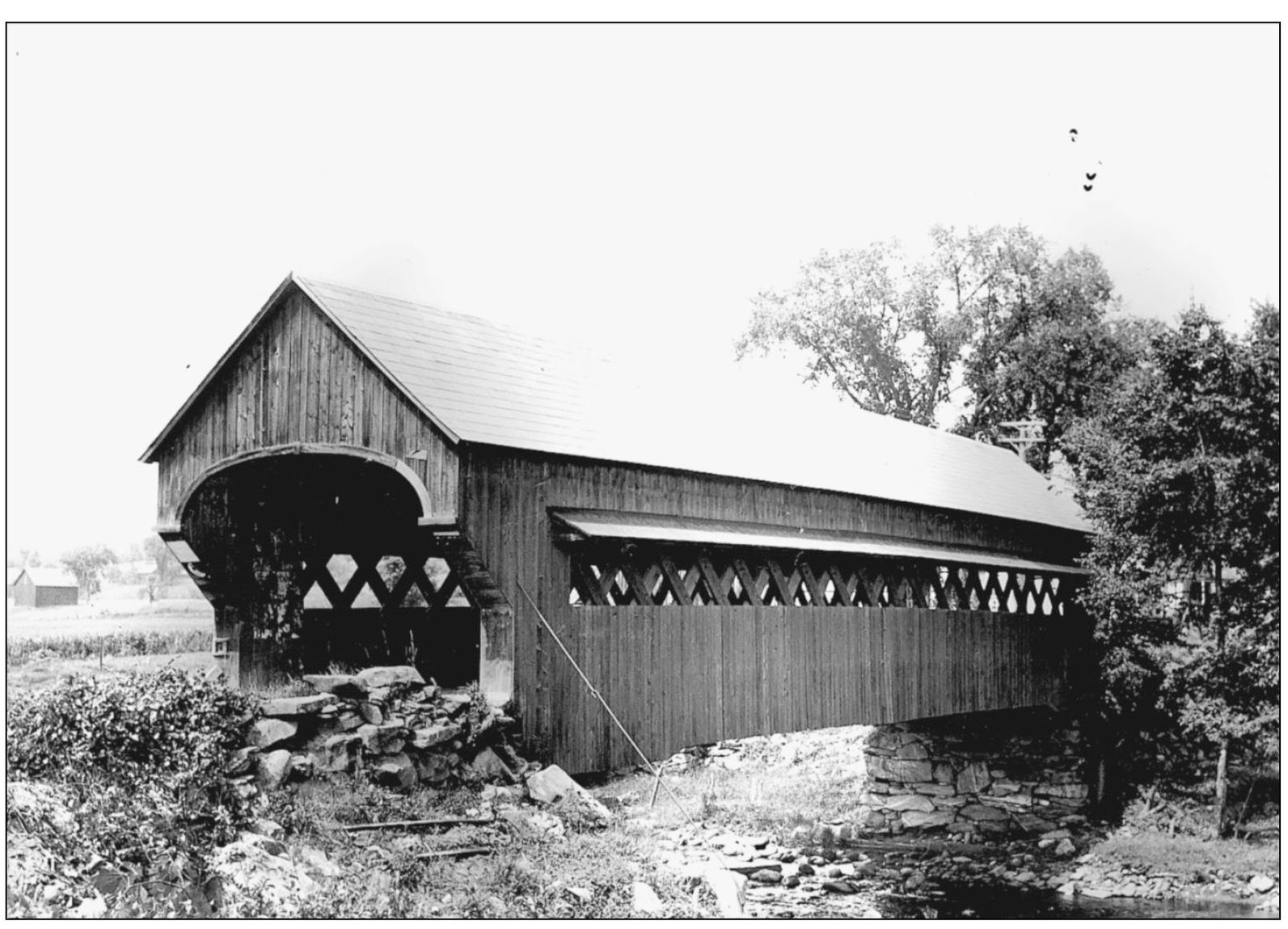
Windsor County was another stronghold of Town lattice truss bridge construction. Inventor Ithiel Town’s partner, Isaac Damon, built an early bridge of this type in the area, the Cheshire Bridge over the Connecticut River in Springfield. Other truss types such as the Long and the Burr also appeared in the county, and some of the upland regions showed a preference for the multiple kingpost truss. James F. Tasker of Cornish, New Hampshire, was a prominent builder here. Windsor County had more than 100 covered bridges, including those over the Connecticut River. The last of several covered bridges in Chester was Mill Bridge, shown here. Located near North Chester, it was lost in the 1938 flood. (Raymond Brainerd, July 22, 1935.)

North Springfield had a pair of twin covered bridges just west of the village. One was replaced years ago, but this survivor, on Baltimore Road, hung on until being moved to a nearby park in 1970. (Richard Sanders Allen collection.)
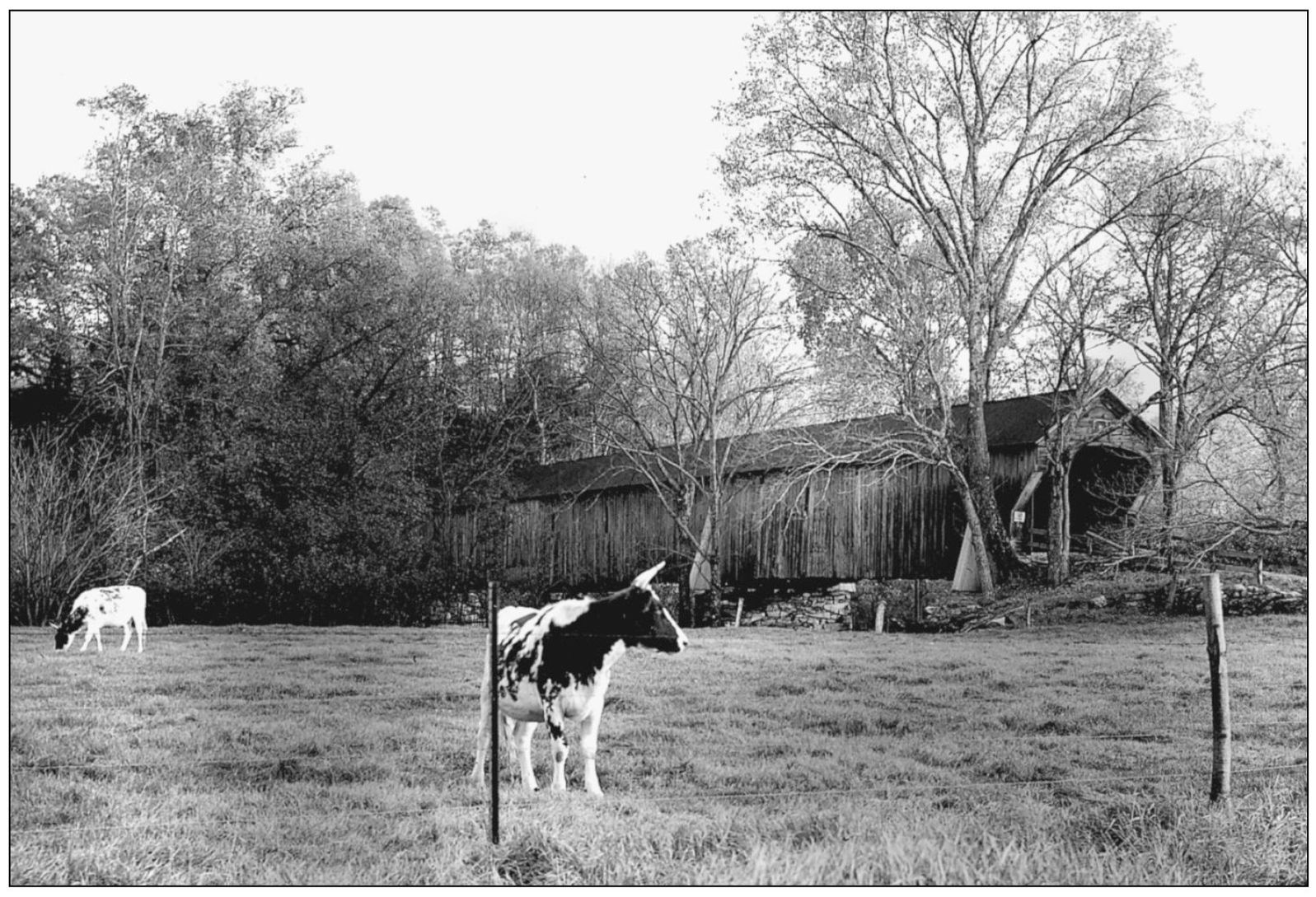
Butterfield’s Bridge in Weathersfield was one of four covered bridges lost when the North Springfield dam impounded the Black River Valley in 1960. (Raymond Brainerd, October 9, 1945.)
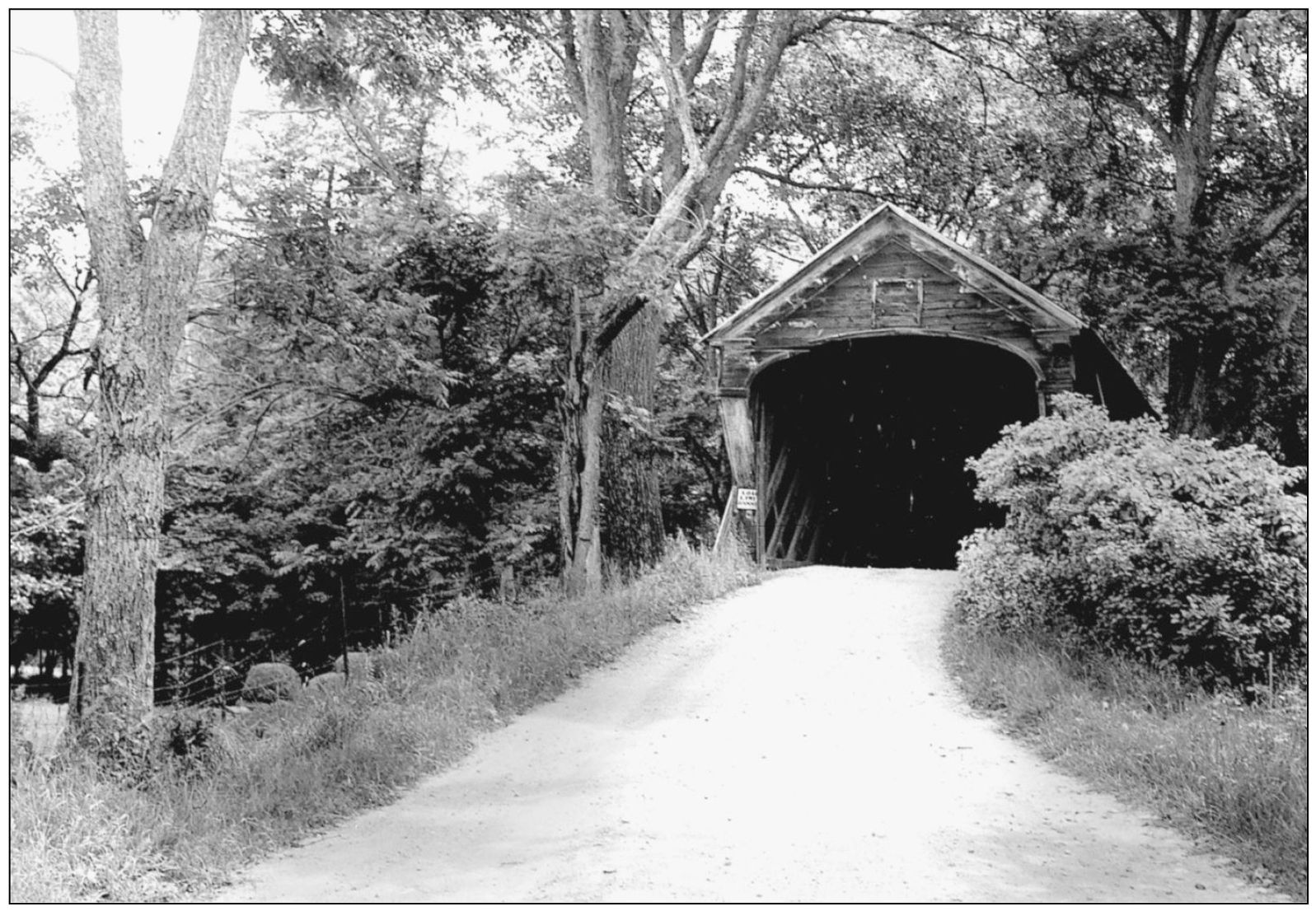
This is another view of Butterfield’s Bridge in Weathersfield. The overhung, arched-portal style was very popular in Windsor County. (Herbert Richter, August 12, 1956.)
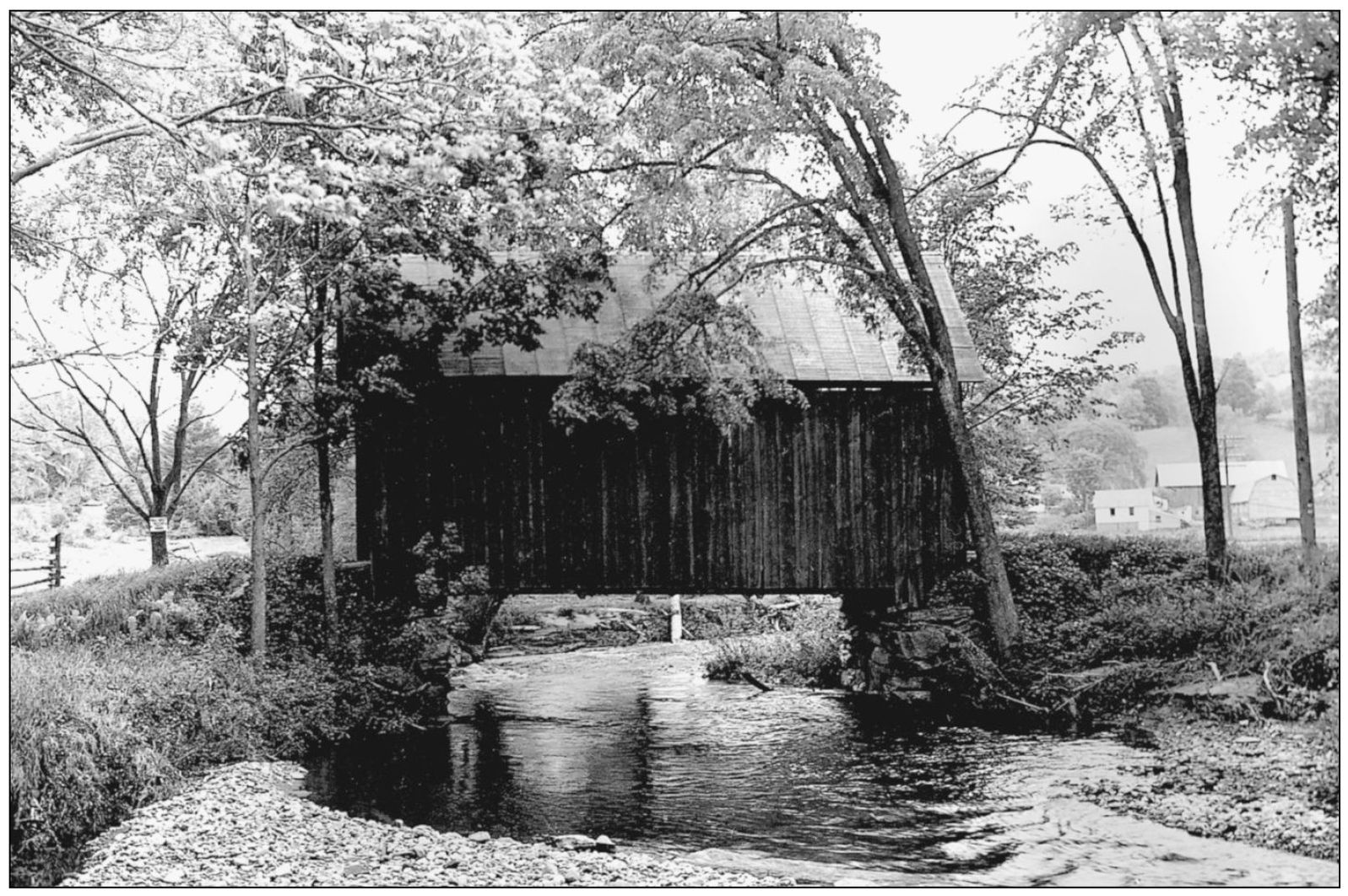
Best’s Bridge, which still exists, was one of five minuscule covered bridges in West Windsor built on a pure tied-arch plan, with no additional truss. (Raymond Brainerd, June 6, 1952.)
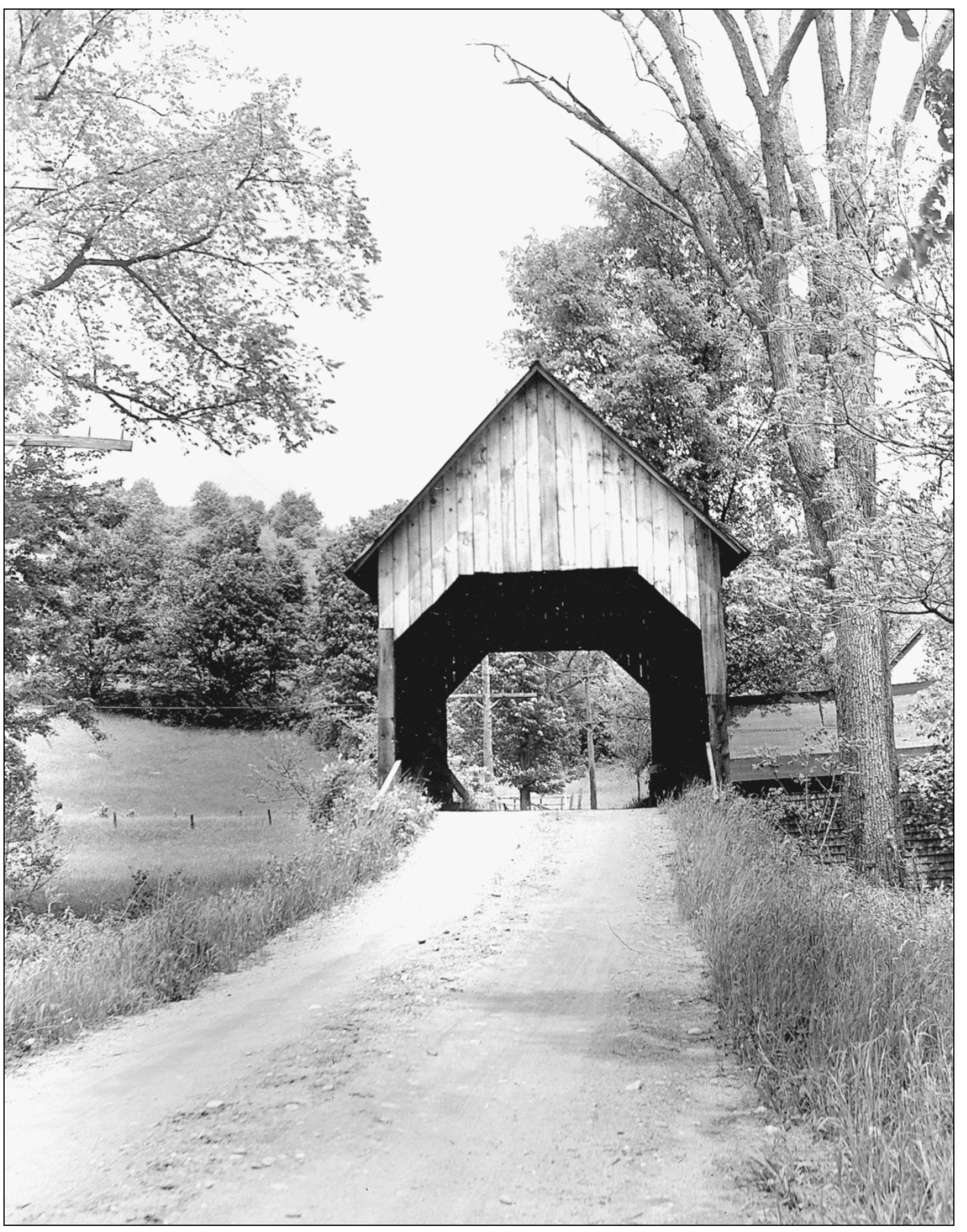
Brownsville Bridge is another of West Windsor’s little pure tied-arch bridges. There is a similar structure near West Woodstock that has truss work under the arch because it has a much longer span. (Raymond Brainerd, June 6, 1952.)
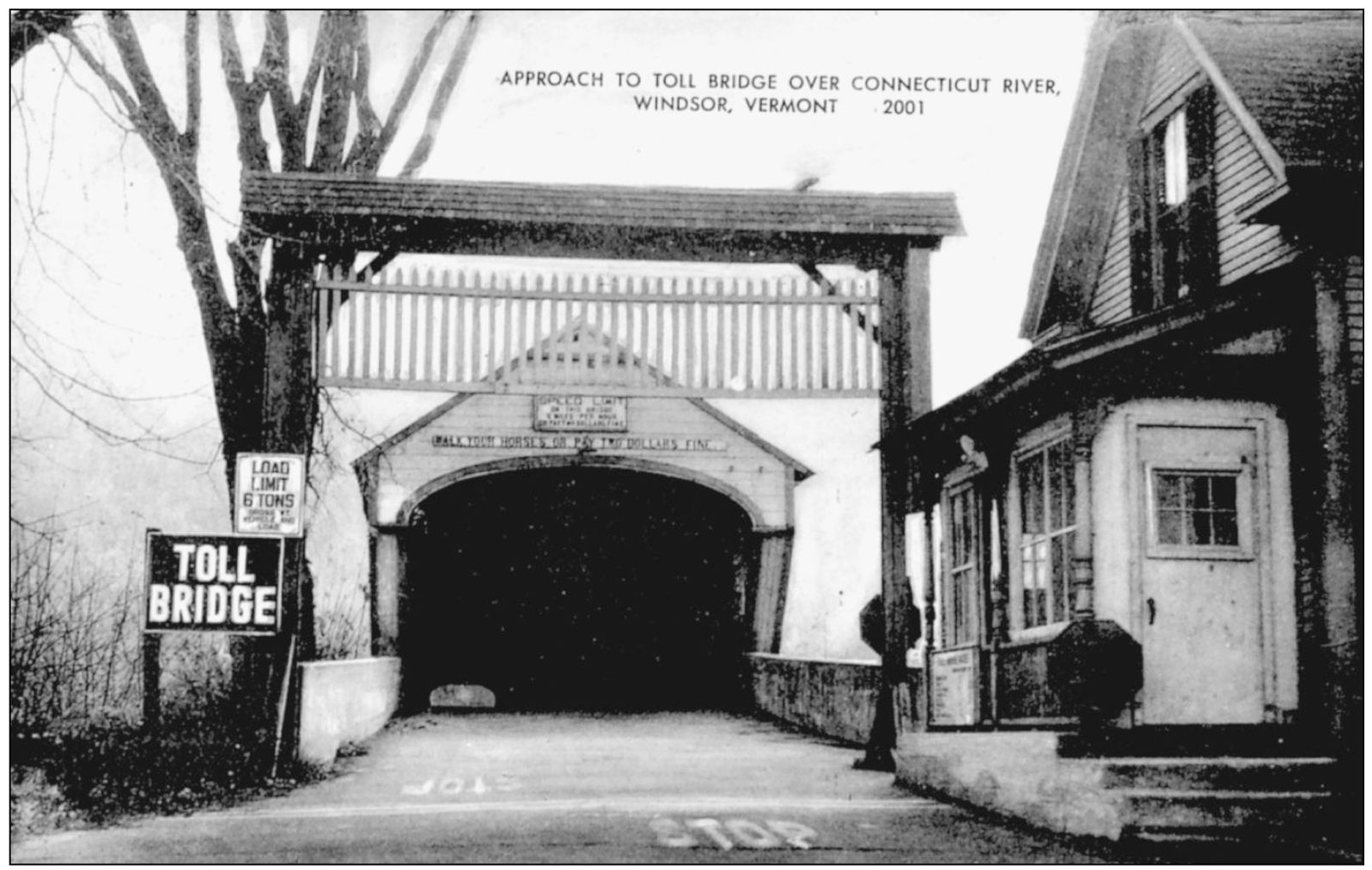
Cornish-Windsor Bridge, over the Connecticut River to New Hampshire, is said to be the longest covered bridge in the United States, at 460 feet, although there is a very close rival near Medora, Indiana. The tollgate came down in 1943. (Author’s collection.)
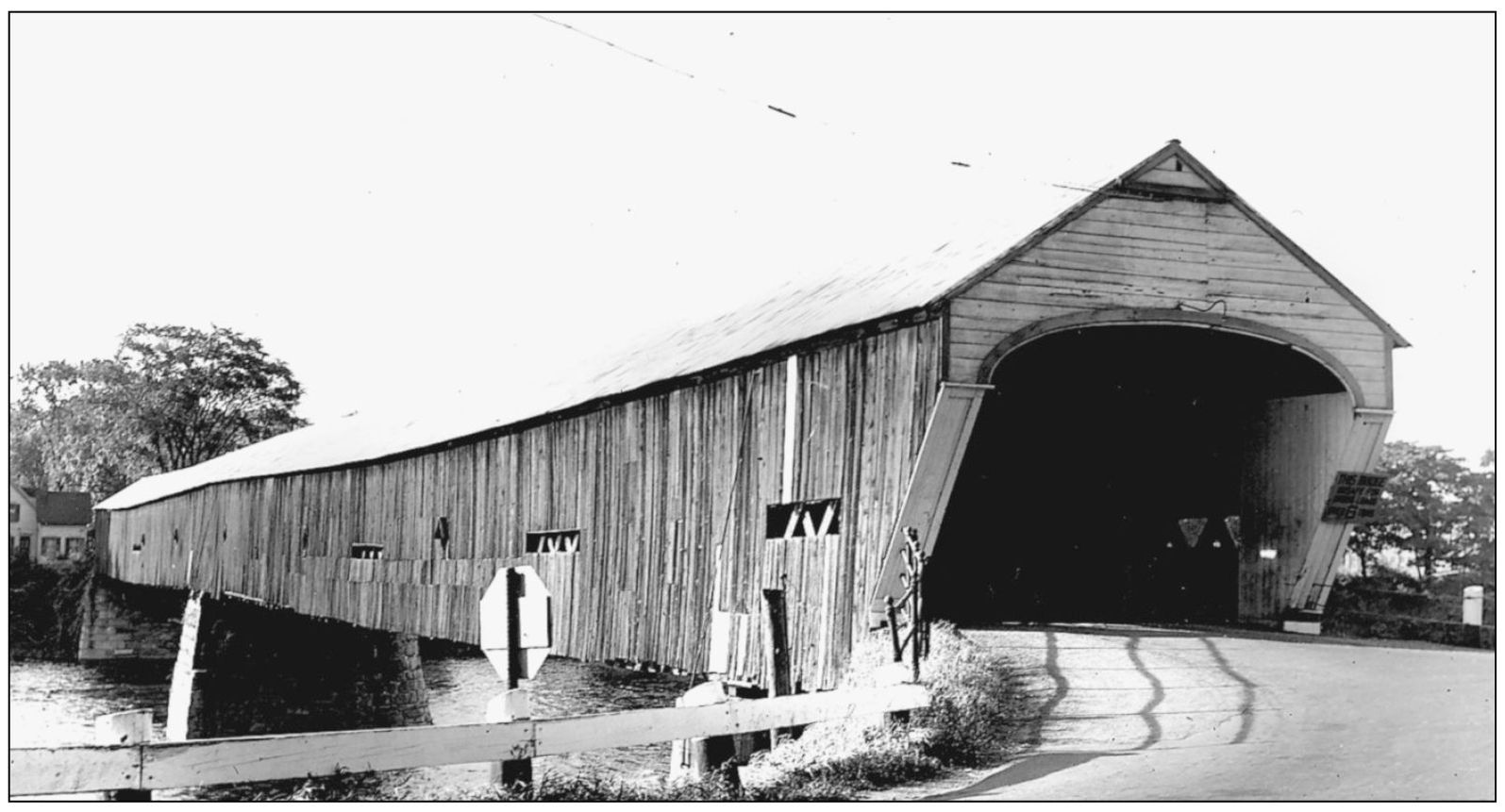
James F. Tasker and Bela J. Fletcher built Cornish-Windsor Bridge in 1866, using a lattice truss with squared notched timbers instead of the usual planks. The trusses were too shallow in height for the long span lengths, and the bridge sagged at an early date. In 1988, following sophisticated engineering work by David C. Fischetti, the lower chords of the bridge were removed and replaced with glue-laminated members, and the bridge now works well. Many preservationists criticized the removal of so much of the old truss work, pointing out that laminated arches could have done the job in keeping with historical technology. (Raymond Brainerd, October 4, 1945.)

Martin’s Mill Bridge is in Martinsville, just south of Hartland, and is directly adjacent to Interstate 91 southbound. It is difficult to see because it is on a lower level and screened by trees. (C. Ernest Walker.)

Readily visible from Interstate 91 northbound at North Hartland is Willard’s Bridge, over the Ottauquechee River. The bridge can also be seen from an Amtrak train. A nearby twin covered bridge was replaced by a concrete bridge years ago, but the concrete one gave way in 2001 to a new covered bridge built by Jan Lewandoski. Thus, once again, there are twin bridges here. (Henry A. Gibson, June 12, 1948.)

The White River joins the Connecticut at White River Junction. The Connecticut and Passumpsic Rivers Railroad bridged the mouth of the river with this impressive structure. The Burr arch, which is highlighted in the bridge’s siding, mark it as a product of designer Henry R. Campbell, although the contractor for the job was Horace Childs and Company. (Richard Sanders Allen collection.)

James F. Tasker built a highway bridge across the White River at White River Junction in the late 1860s, using the squared timber lattice he had recently tried in the Cornish-Windsor Bridge. The structure was destroyed in the 1913 flood. (Oscar Lane notebooks.)

Ledyard Bridge connected the locality of Lewiston, in Norwich, with Hanover, New Hampshire, across the Connecticut River. Completed in 1859, it served traffic until it was taken down in 1934. (Richard Sanders Allen collection.)

U.S. Route 5 crossed the Ompompanoosuc River on this covered bridge in the town of Norwich. Bela J. Fletcher built the bridge in 1866, and it was another squared timber lattice truss. It was left standing when bypassed in 1937 but was removed in 1954 because the water level underneath had risen as a result of the new Wilder Dam on the Connecticut River. The site is briefly visible to travelers on Interstate 91. (Raymond Brainerd, July 3, 1939.)

At Quechee, this Town lattice truss replaced an earlier multiple kingpost truss in 1885. The bridge was torn down in the 1920s. In 1970, when Quechee was being redeveloped as an upscale residential center, the concrete bridge in town received a decorative wooden covering. It is not an authentic covered bridge, but it often appears in tourist literature anyway. (Photograph by Basil Kievit; Richard Sanders Allen collection.)
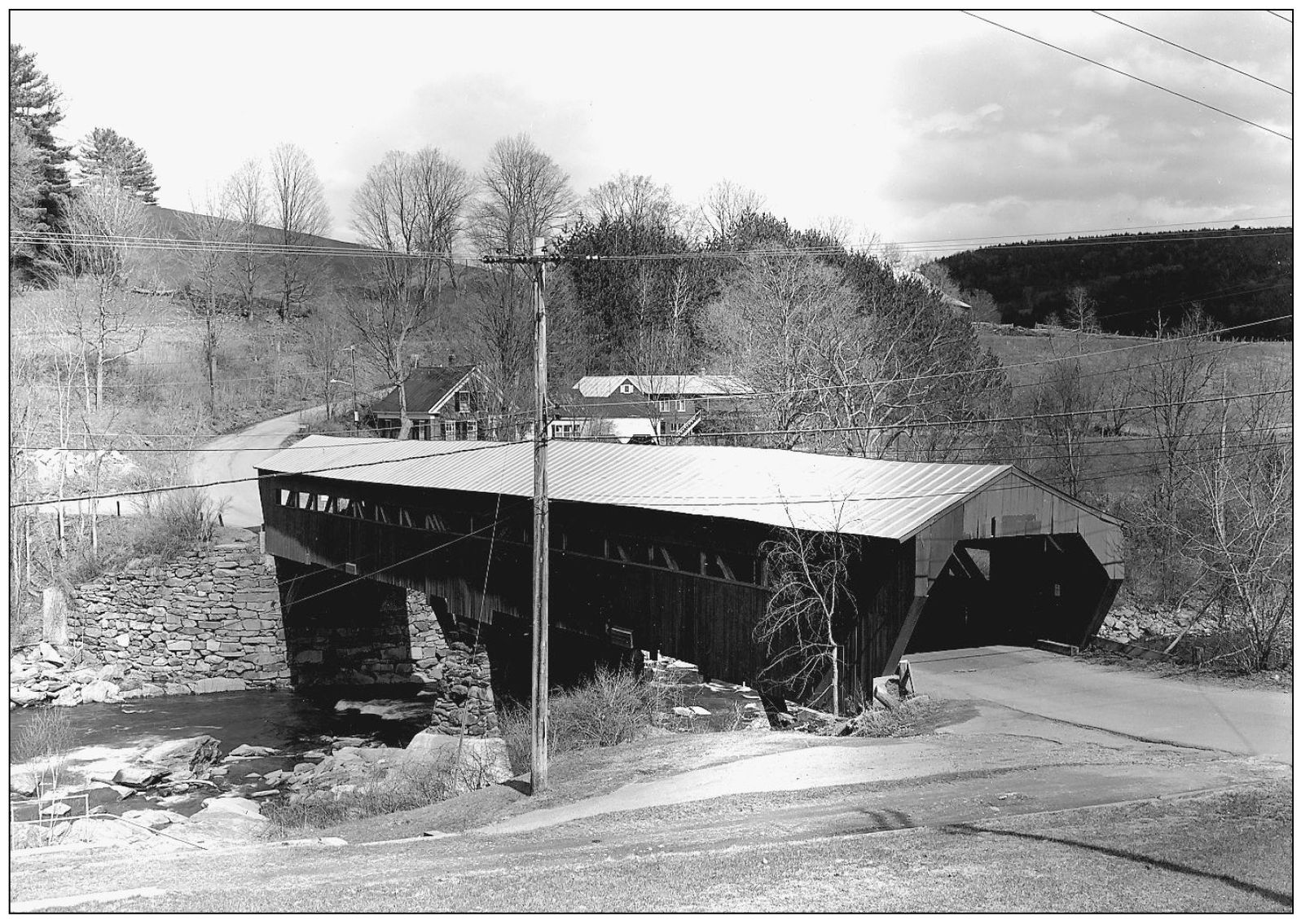
Woodstock’s famous Taftsville Bridge still carries traffic over the Ottauquechee River on a side road adjacent to busy U.S. Route 4. It was built in 1836 by Solomon Emmons III. (Joseph D. Conwill, April 13, 1986.)

Ephraim Twitchell built this Burr truss covered bridge over the Ottauquechee River at the west entrance to Woodstock village in 1847. It served traffic on U.S. Route 4 until being bypassed with a new bridge in 1938. When it was removed in 1944, the old bridge was still so sturdy that the demolition crew had to blast to bring it down. (Henry A. Gibson, May 29, 1938.)

Bridgewater was home to 10 covered bridges, but none are left today. This one, at the village itself, was lost in the 1927 flood. (Author’s collection.)
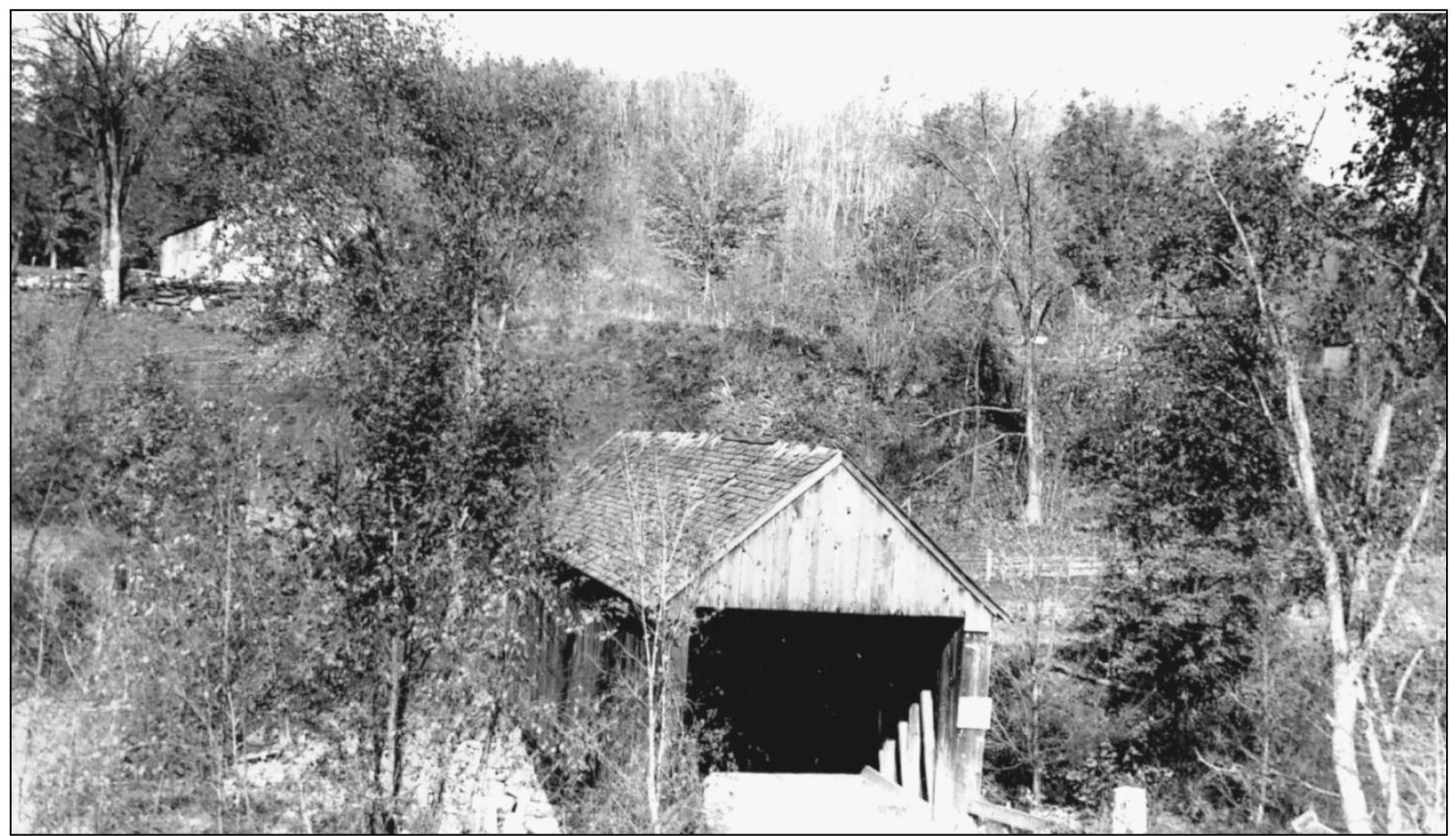
Royalton also had many covered bridges. Broad Brook Bridge, south of South Royalton, was the very last one in town when removed in 1940. (Photograph by Charles Harris; Richard Sanders Allen collection.)
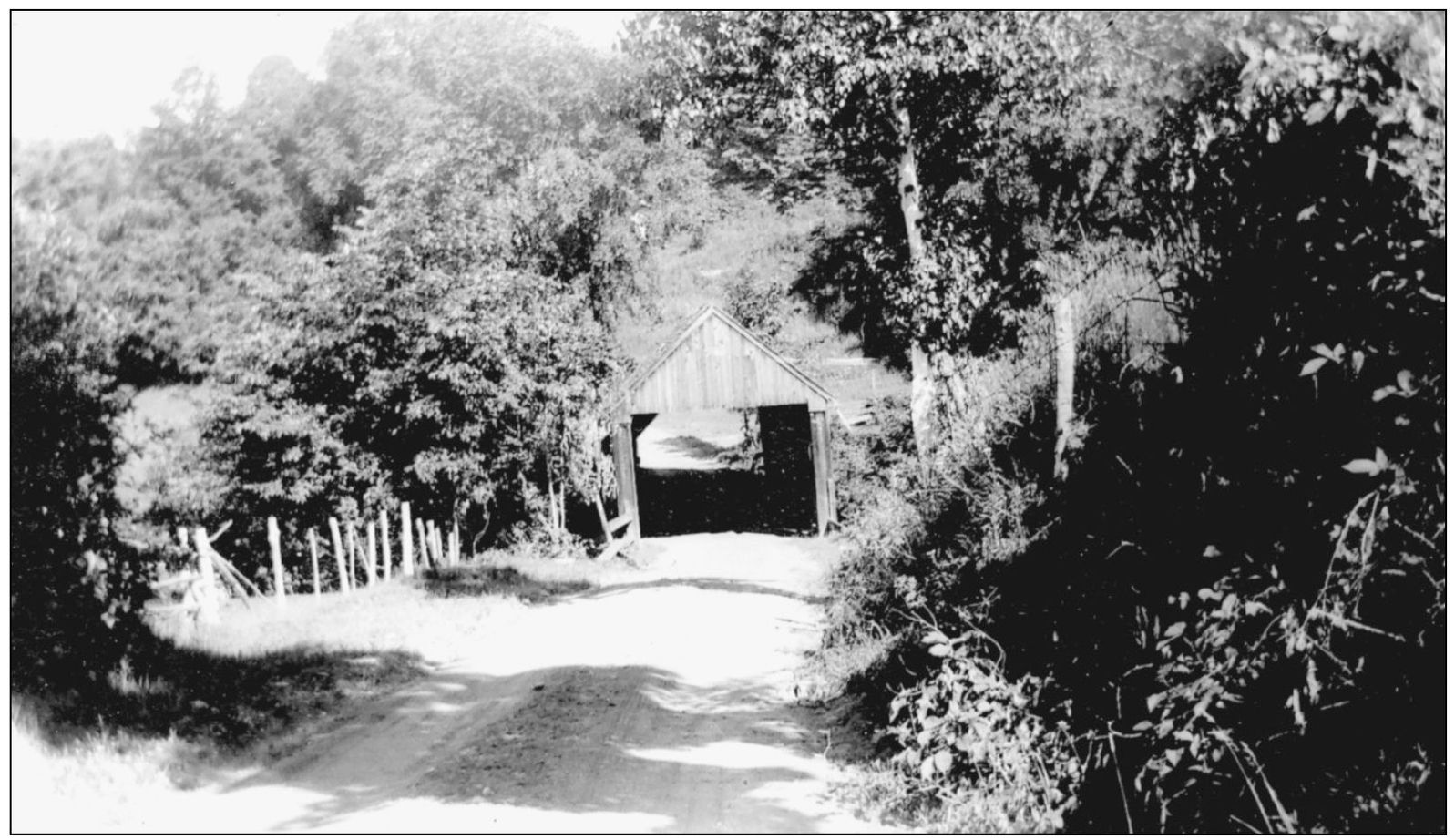
Here is another view of Broad Brook Bridge in Royalton, which was removed in 1940. (Photograph by Mrs. R. W. Williams, summer 1940; Richard Sanders Allen collection.)
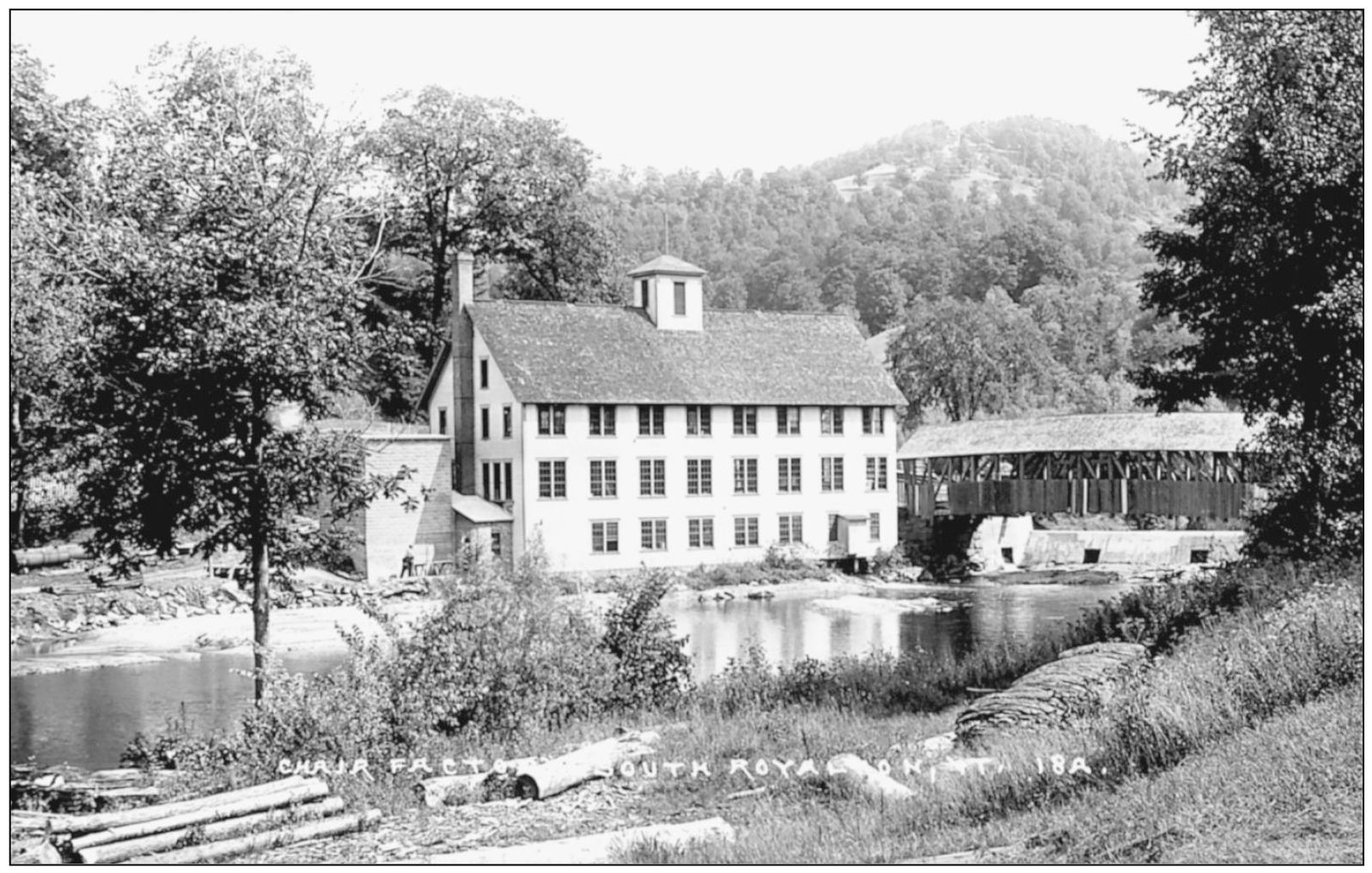
Chair Factory Bridge crossed the First Branch of the White River north of South Royalton until 1937. (Author’s collection.)

Chair Factory Bridge was typical of the multiple kingpost design used for many bridges in the upland regions of Windsor County. (Richard Sanders Allen.)

Hop Vine Bridge crossed the Second Branch of the White River on state Route 107, just beyond where it turns off state Route 14 at North Royalton. Note the state highway number painted on the post at the left. (Oscar Lane notebooks.)
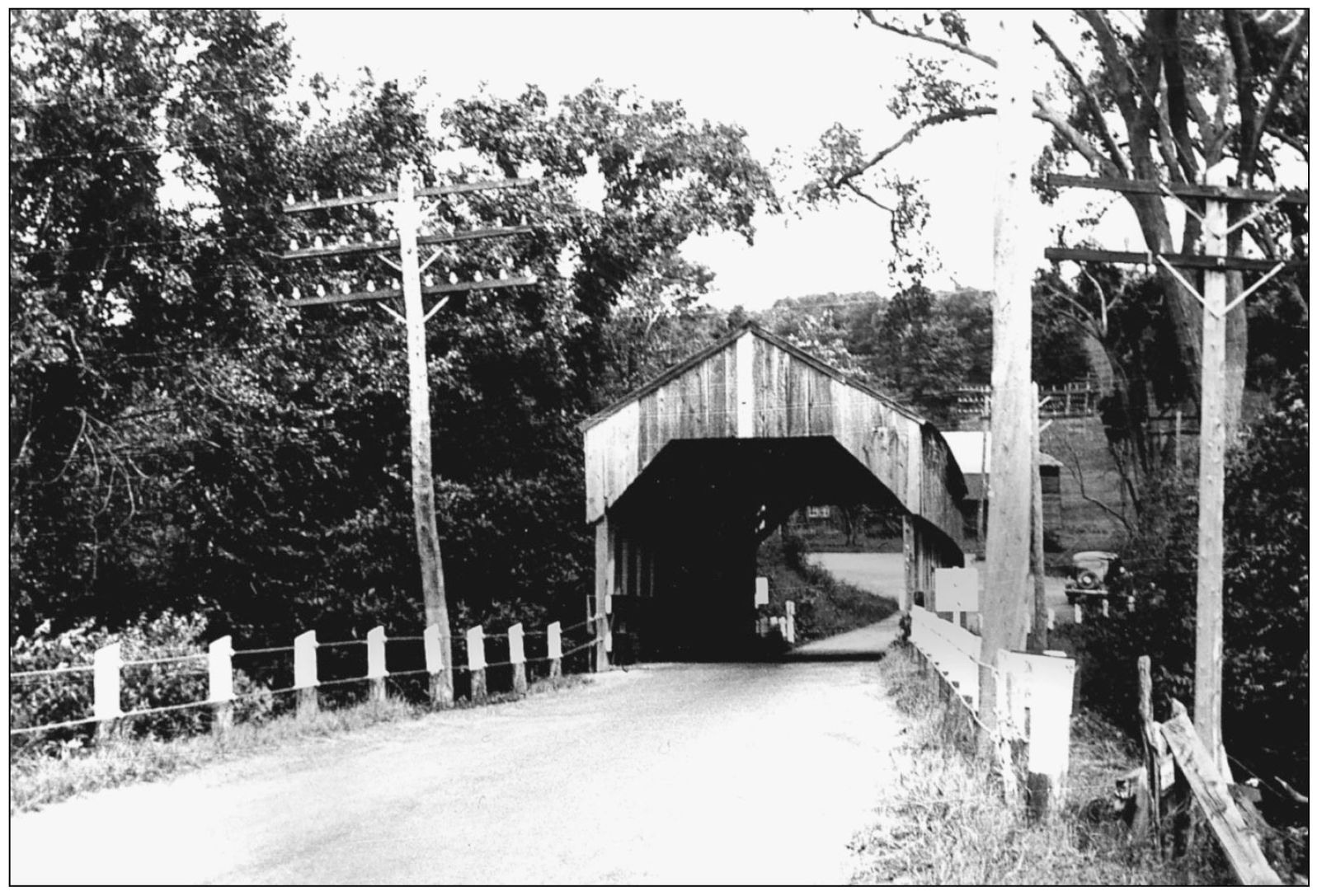
Hop Vine Bridge was replaced in 1937 after being damaged by a falling tree. (Richard Sanders Allen.)
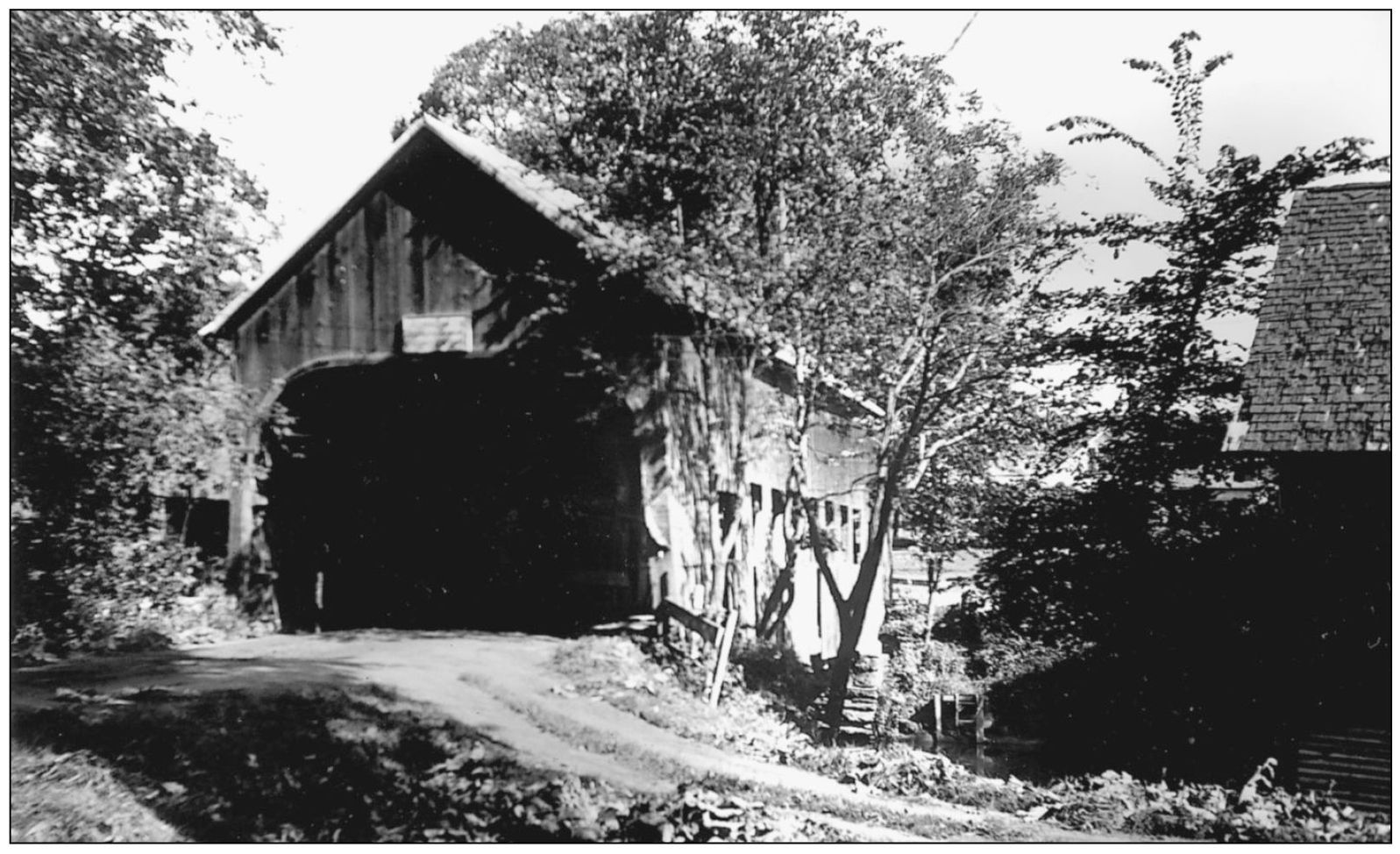
This is one of three covered bridges that once served East Bethel. (Photograph by Basil Kievit; Richard Sanders Allen collection.)
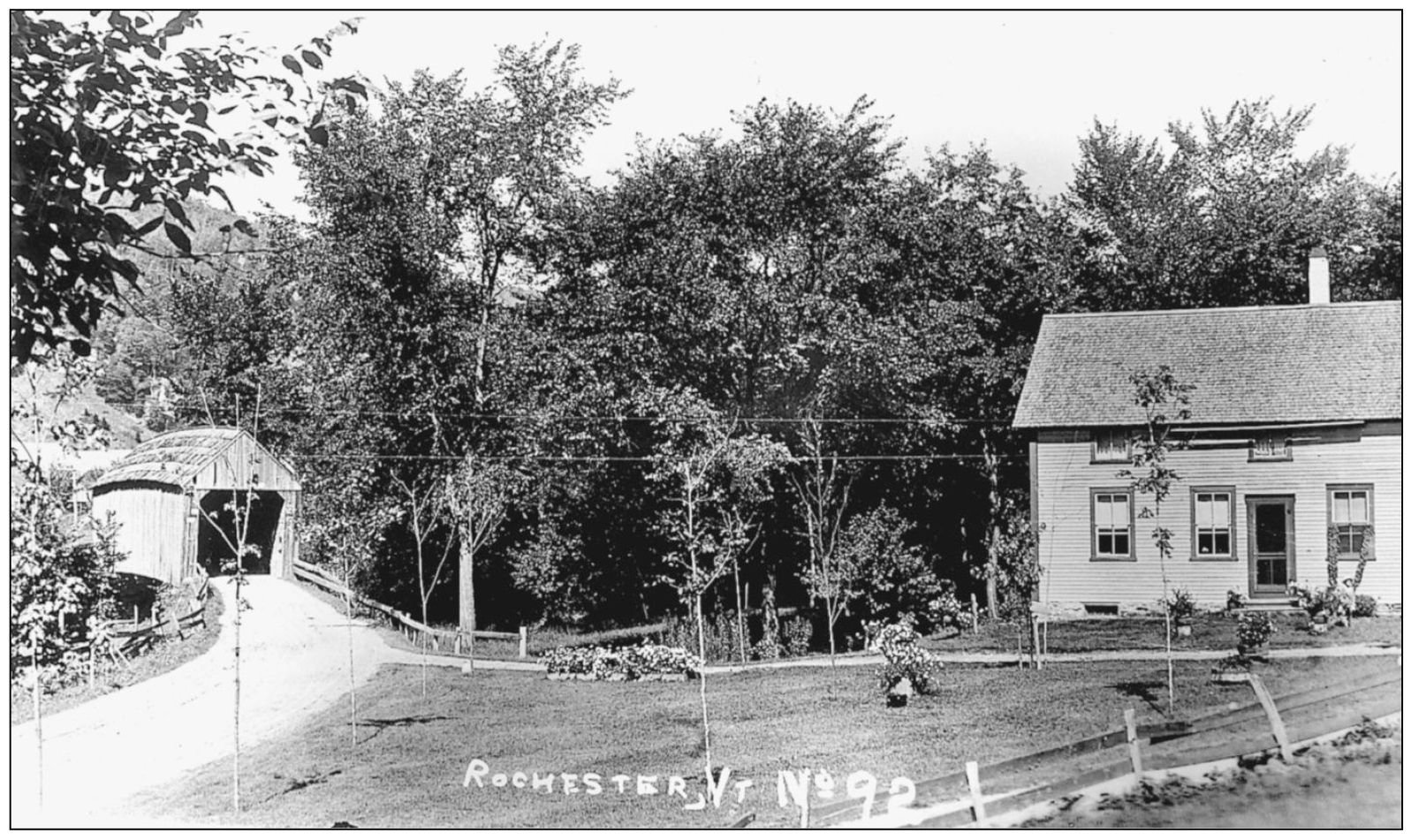
Rochester once had several covered bridges, but little is known of their history. (Richard Sanders Allen collection.)